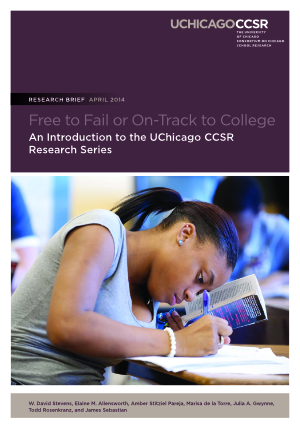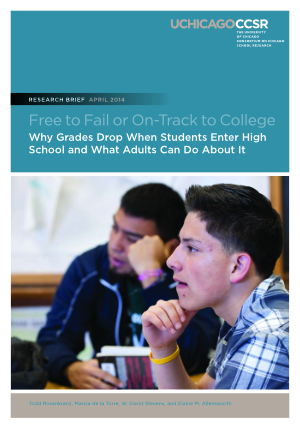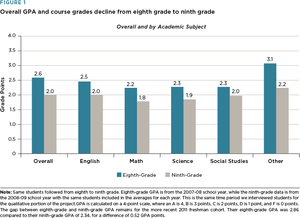1. Why do students earn lower grades as they begin high school?
2. How do student behaviors and school practices contribute to the decline?
3. What can schools do to support students during the transition?
4. How can teachers support high grades while implementing challenging instruction that supports learning gains?
High school course performance is a key lever for both graduation and college readiness, and ninth-grade attendance and course performance are critical for getting students on-track to graduation, yet many students struggle with the transition to high school.
The Free to Fail or On-Track to College series examines the challenges students face in high school, and how schools respond to those challenges, and tackles the question if student engagement is key for high school graduation and college readiness, why do so many students put in little effort, and what can schools do to encourage student engagement in school?
The first brief in the series, Why Grades Drop When Students Enter High School and What Adults Can Do About It, details the dramatic drop in grades, attendance, and academic behavior that occurs between eighth and ninth grade and demonstrates how intense monitoring and support can help schools keep more ninth-graders on track to graduation.
Key Findings:
- Both high- and low-achieving students struggle when they enter high school.
- Grades decline because students’ attendance and study habits plummet across the transition to high school—not because the work is harder.
- Adult monitoring and support can prevent the declines that typically happen across the transition from high school.
The second brief in the series, Setting the Stage for Academic Challenge: Classroom Control and Student Support, finds that challenging work is a key component of student learning, but challenging work only benefits student achievement in classrooms with strong student behavior.
Key Findings:
- Students learn the most in classrooms that are both very orderly and challenging.
- In disorderly classrooms, students do not learn much, even if the academic demands are high.
- Order is harder to maintain when work becomes more challenging, particularly in classrooms with low-achieving students.
- Academic challenge can lead to lower grades, unless accompanied by sufficient support for teachers and students.
Click below to view a 90-second episode of GO FIGURE, with David Stevens explaining Figure 3 of this research (December 13, 2023).











